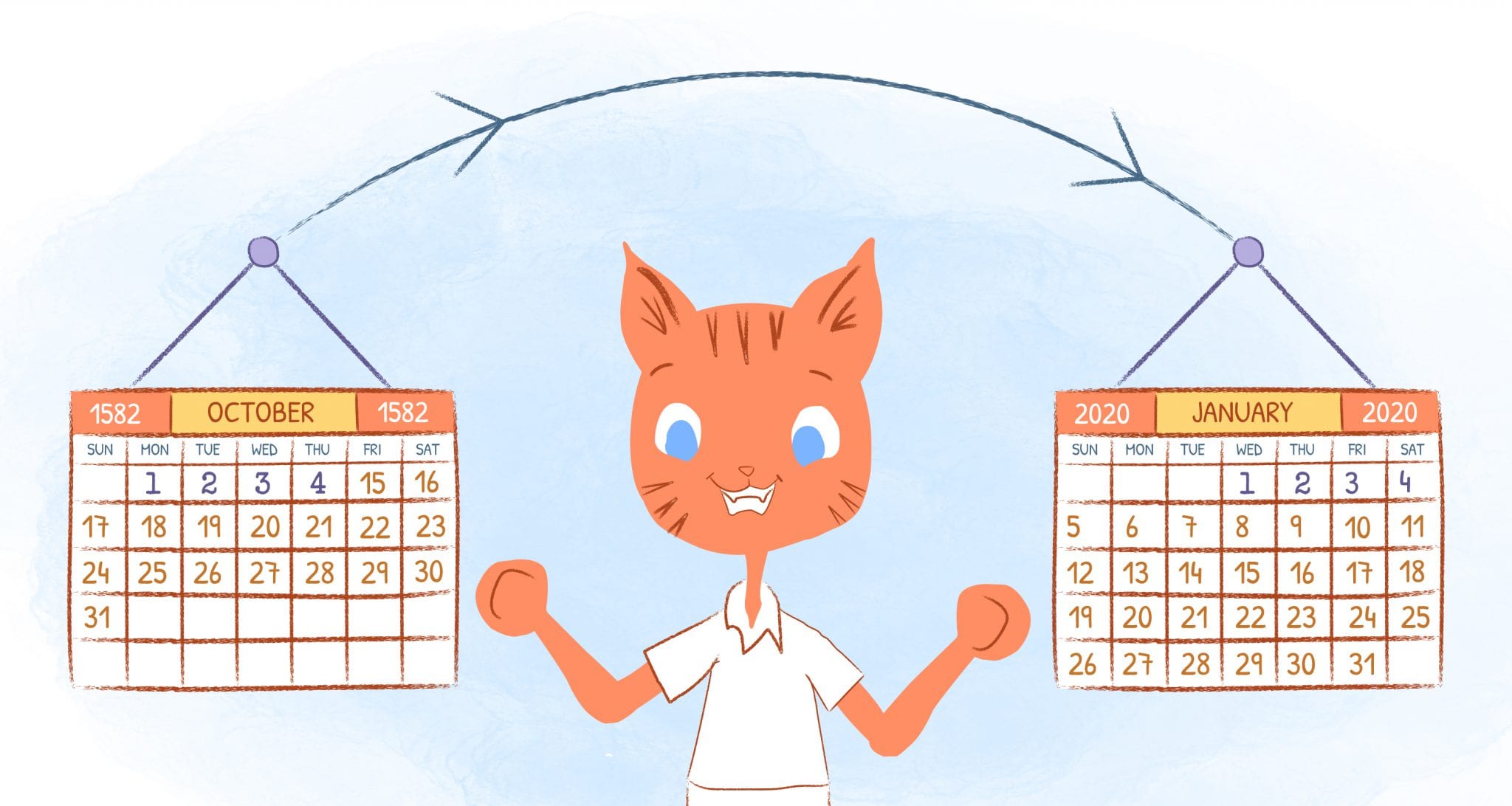

Have you already given up on your New Year’s Resolutions? Don’t be too hard on yourself. Only 8% of people actually reach their goals. But, why?
Well, there are a lot of factors. But, here’s a problem that often gets overlooked. We don’t set goals correctly.
Typically, when we set goals, we assign a deadline to them. And that can be counterproductive.
“We focus on the end goal that we want to achieve and the deadline we want to do it by,” explains James Clear. “We say things like, ‘I want to lose 20 pounds by the summer’ or ‘I want to add 50 pounds to my bench press in the next 12 weeks.'”
“The problem with this is that if we don’t magically hit the arbitrary timeline that we set in the beginning, then we feel like a failure … even if we are better off than we were at the start,” he adds. “The end result, sadly, is that we often give up if we don’t reach our goal by the initial deadline.”
“In my experience, a better way to achieve your goals is to set a schedule to operate by rather than a deadline to perform by,” adds James.
“Instead of giving yourself a deadline to accomplish a particular goal by (and then feeling like a failure if you don’t achieve it), you should choose a goal that is important to you and then set a schedule to work towards it consistently,” he suggests.
I can get behind that. But, to make this possible, you need a Calendar. So, to make this less intimidating for you, here are eight pointers on how to add your goals to your Calendar as easily as possible.
1. Determine how long you will need to accomplish each task (to plan your day accordingly).
Have you ever had one of those mornings when you woke-up feeling like the world was at your fingertips? In your mind, you tell yourself that you’re going to cross everything off your to-do list. You’re also going to finally return those essential phone calls, schedule meetings for the next year, and still make it to the gym — while somewhere still squeezing in family time.
I don’t want to dampen your enthusiasm. But, seriously, how likely are you to succeed in accomplishing all of that?
In addition, most of us drastically underestimate the amount of time we spend every day managing email, making phone calls, preparing meetings, and commuting.
When it’s all said and done, you’re lucky if you’ve accomplished half of what you hoped. In response, you feel defeated and frustrated because your expectations were not met.
This is precisely when a Calendar can be useful. It can help you plan your day more effectively by estimating your time more accurately. And, when you know how you’re time is being spent, you can learn how to schedule your goals appropriately.
To help you figure this out, you can use time tracking tools or a productivity journal — or both if you prefer. Ideally, the longer you record your daily activities, the more accurate picture you’ll have.
2. Know thy goals.
With that out of the way, which goals deserve to be scheduled? That varies from person to person based on their priorities and values. But, whatever they are, they need to be specific and challenging.
According to Edwin Locke and Gary Latham’s research, people who follow these two principles (specific and challenging goals) perform better 90 percent of the time. For example, if your goal is to shed 30 pounds before the start of summer, that might be too ambitious. It’s also too vague and not specific enough.
Instead, break this goal down to be more specific and achievable. For instance, “In March, I will lose five pounds by reducing sugar, bread, and sodas. In addition, I will walk briskly for 20 minutes a day.” The more precise your goals are, the more likely you are to reach them.
In short, there are definitely right and wrong ways to set goals. However, setting your goals incorrectly will almost certainly lead you to miss something. In turn, this will force you to go back and redo things, or otherwise deviate from your intended course.
With that said, once you’ve identified your smart goals, you can insert them into your Calendar so that you don’t schedule anything else ahead of them. So, for example, you could schedule your brisk walk daily from 1 pm to 1:20 pm.
3. Choose your Calendaring method.
You know how you’re spending your time and have set your goals correctly. What’s next? Well, it’s your Calendaring method.
By this, I mean do you want to use an online Calendar? App? Paper planner? That’s totally up to you as each has its own pros and cons.
For example, an online Calendar or app gives you 24/7 access to your schedule. That can come in handy when you need to update or review your Calendar. What’s more, you can receive reminders, customize, or share your Calendar with others to help with accountability or prevent conflicts.
At the same time, digital Calendars can quickly become cluttered or time-consuming if you’re frequently adding notes. In addition, Dr. Gail Matthews of Dominican University in California conducted a study with 267 participants on goal setting. Putting your goals on paper increases your chances of achieving them by 42 percent.
Overall, there’s no right or wrong Calendaring method. The most important takeaway here is that you actually have a Calendar to add your goals to you it.
4. Divide your day into blocks of time.
As with your Calendaring method, this is totally up to you. It depends on what time of the day you’re most productive. For example, most people are most alert and energetic between 8 and 9 am. As a result, you should focus on your most important task or goal during that time.
Moreover, you may want to try 52 minutes of work followed by 17 minutes of rest when working towards a daily goal. In sports, this is called interval training. The authors of Peak Performance, Brad Stulberg, and Steve Magness, concluded it wasn’t only for gifted athletes to adopt an interval-based productivity approach.
According to one study, its most productive employees usually spend 52 minutes immersed in their work, then take a break of 17 minutes before returning to their work. Therefore, to remain productive toward meeting your goals, you have to work smarter by taking frequent breaks throughout.
5. Let’s be honest; less is always more.
If you are prone to packing too many tasks into one day, you’re not alone. However, you may be headed in the direction of Burnoutville.
A Calendar can show you how full your schedule actually is. You can use this visual to keep your daily goals realistic and spread out your activities.
Here are a few more tips:
- Keep your Calendar light. Trying to fill your day with too much may leave you feeling stressed, overwhelmed, and less likely to meet your goals.
- Make time for the things you care about. Plan activities and hobbies that you enjoy in your Calendar. By switching off ‘busy mode,’ you have a chance to rest and recharge to stay energized and focused on your goals.
- Schedule time for breaks between your meetings, appointments, and tasks. You can make the most of your momentary pauses by reflecting, preparing, and resting your mind. During these breaks, go for a walk or just sit silently in reflection.
This structure may make you wonder how you’ll accomplish your priorities. However, not taking frequent breaks can leave you feeling zapped and overextended.
6. Keep your eyes on the prize.
Want to succeed in reaching your goals? Then you need to stay focused by reducing distractions.
As an example, let’s go back to your weight goal. If you surround yourself with people who don’t have a healthy diet, then there’s a good chance you’ll be eating just as poorly. Or, what if you don’t go grocery shopping and the only thing to eat in your home is junk food? And, if you don’t protect your time, someone meets to schedule a meeting with you during your walk.
I know. That’s a lot I just threw at you. But, in short, you can keep your eye on the prize by;
- Add your goals to your Calendar before anything else. This way, if someone tries to schedule time with you, it won’t be during that block.
- Share your Calendar. Another way to prevent others from eating into your valuable time. When they view your Calendar, they can see when you aren’t available and when you’re free.
- Block out electronic distractions. If you need an hour to focus on your goals, then block or turn off any notifications during that time so that you won’t get distracted.
- Schedule declutter and organization time. Whether it’s a daily, weekly, or monthly event, your environment plays a huge role in achieving your goals. According to research, you have a harder time focusing on one visual stimulus when multiple ones compete for your attention. So, set aside time to declutter and organize everything from your desk to Calendar on a consistent basis.
7. Record your progress.
According to research published by the American Psychological Association, the more often you monitor your progress, the more likely you are to succeed if you have a goal. In addition, by reporting your progress publicly or physically recording it, you increase your chances of success even more.
“Monitoring goal progress is a crucial process that comes into play between setting and attaining a goal, ensuring that the goals are translated into action,” said lead author Benjamin Harkin, PhD, of the University of Sheffield. The study appears in the journal Psychological Bulletin. “This review suggests that prompting progress monitoring improves behavioral performance and the likelihood of attaining one’s goals.”
How often should you track your progress? Again, that depends. When it comes to daily goals, you should reflect on what worked on what didn’t at the end of every day. You can do this every couple of days or make this a weekly event for larger goals. No matter how often you do, make sure that this is also scheduled in your Calendar.
8. Follow through.
“Ok, so you’ve created your schedule, figured out the tasks/steps you need to take to accomplish your larger goals, and put them tidily into your daily planner. Now what?” asks entrepreneur Alexandra Hsie.
“The follow-through is the hardest.” And while sticking to your schedule helps, this is all about making incremental changes.
“Establish small habits that build up into greater habits,” Alexandra advises. “For example, want to wake up earlier? Change your wakeup time by fifteen minutes each day until you get to your goal wakeup time.”
What if you’re still missing your goal? Your wakeup time should be changed by 15 minutes every week instead of daily. “The point here is to make a large goal, like waking up at 6 am when you generally get up at 11 am, a set of manageable and small tasks that build into a habit.”
Another tip? Organize a group of people to hold you accountable for your goals. For example, if you want to lose weight, schedule a time to go with friends or have a text chain to motivate each other.
Also, be sure to recognize and celebrate your accomplishments. “Say out loud to others what you’ve achieved that day. Accept their congratulations and allow yourself to be proud of what you’ve done,” suggest Alexandra. “And if that feels weird to you, at least take a moment to yourself to fully realize what you’ve accomplished because you deserve to be recognized for all of your hard work.”
Image Credit: Cottonbro; Pexels; Thank you!











John Hall
John Hall is the co-founder of Calendar a scheduling and time management app. He’s also a keynote speaker that you can book at http://www.johnhallspeaking.com.